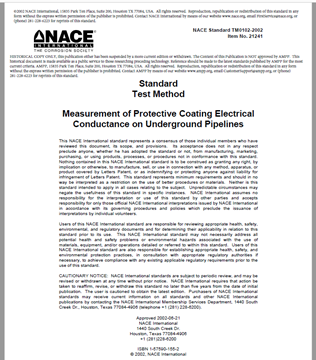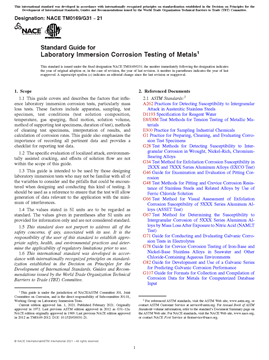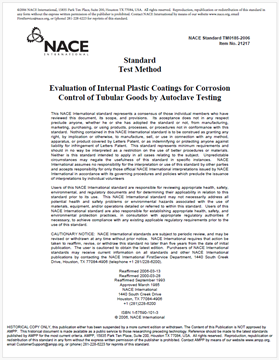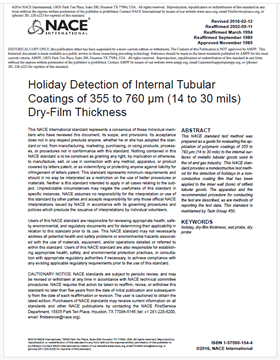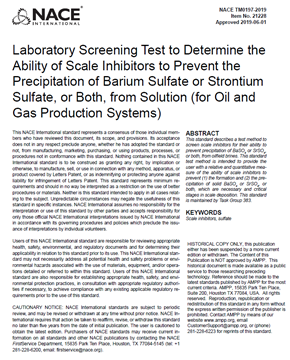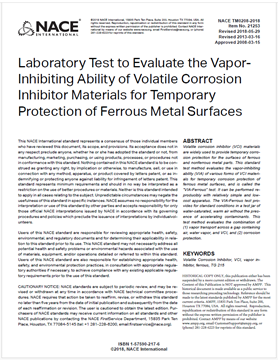Search
Products tagged with 'Standards and Reports'
View as
Sort by
Display
per page
NACE Technical Committee Publication 21415-SG Potential Effects of Upstream Additives on Refinery Corrosion and Fouling
Product Number:
21415-SG
$109.00
NACE TM0102-2002, Measurement of Protective Coating Electrical Conductance on Underground Pipelines
Product Number:
21241-SG
Publication Date:
2002
$179.00
NACE TM0169-2021/ASTM G31-21, Standard Guide for Laboratory Immersion Corrosion Testing of Metals
Product Number:
21200-SG
Publication Date:
2021
$109.00
NACE TM0183-2018, Evaluation of Internal Plastic Coatings for Corrosion Control of Tubular Goods in an Aqueous Flowing Environment
Product Number:
21213-SG
Publication Date:
2018
$109.00
NACE TM0185-2006, Evaluation of Internal Plastic Coatings for Corrosion Control of Tubular Goods by Autoclave Testing
Product Number:
21217-SG
$179.00
NACE TM0186-2016, Holiday Detection of Internal Tubular Coatings of 355 to 760 μm (14 to 30 mils) Dry-Film Thickness
Product Number:
21218-SG
Publication Date:
2016
$179.00
NACE TM0190-2017, Impressed Current Laboratory Testing of Aluminum and Zinc Alloy Anodes
Product Number:
21221-SG
Publication Date:
2017
$179.00
NACE TM0197-2019, Laboratory Screening Test to Determine the Ability of Scale Inhibitors to Prevent the Precipitation of Barium Sulfate or Strontium Sulfate, or Both, from Solution (for Oil and Gas Production Systems)
Product Number:
21228-2019
Publication Date:
2019
$179.00
NACE TM0208-2018 "Laboratory Test to Evaluate the Vapor-Inhibiting Ability of Volatile Corrosion Inhibitor Materials for Temporary Protection of Ferrous Metal Surfaces"
Product Number:
21253-SG
Publication Date:
2018
$179.00
NACE TM0215-2015 “Test Method for Measurement of Gouge Resistance of Coating Systems”
Product Number:
21270-SG
Publication Date:
2015
$179.00
NACE TM0294-2016-SG, “Testing of Embeddable Impressed Current Anodes for Use in Cathodic Protection of Atmospherically Exposed Steel-Reinforced Concrete”
Product Number:
21225-SG
ISBN:
1-57590-133-1
Publication Date:
2016
$109.00
NACE TM0316-2016, “Four-Point Bend Testing of Materials for Oil and Gas Applications”
Product Number:
21404-SG
Publication Date:
2016
$179.00


